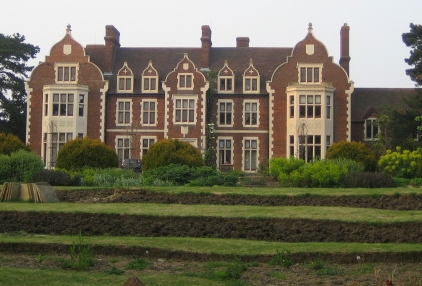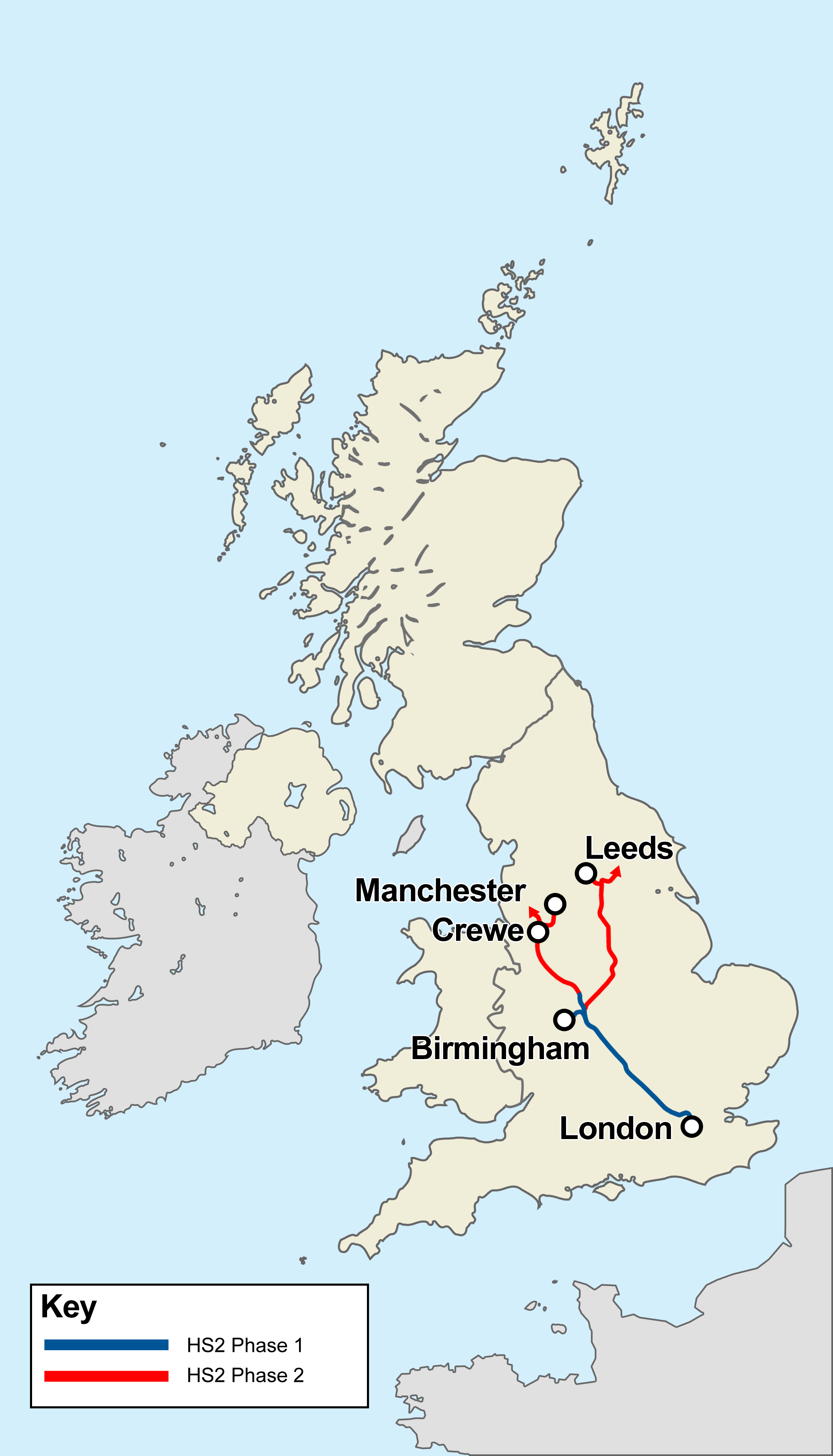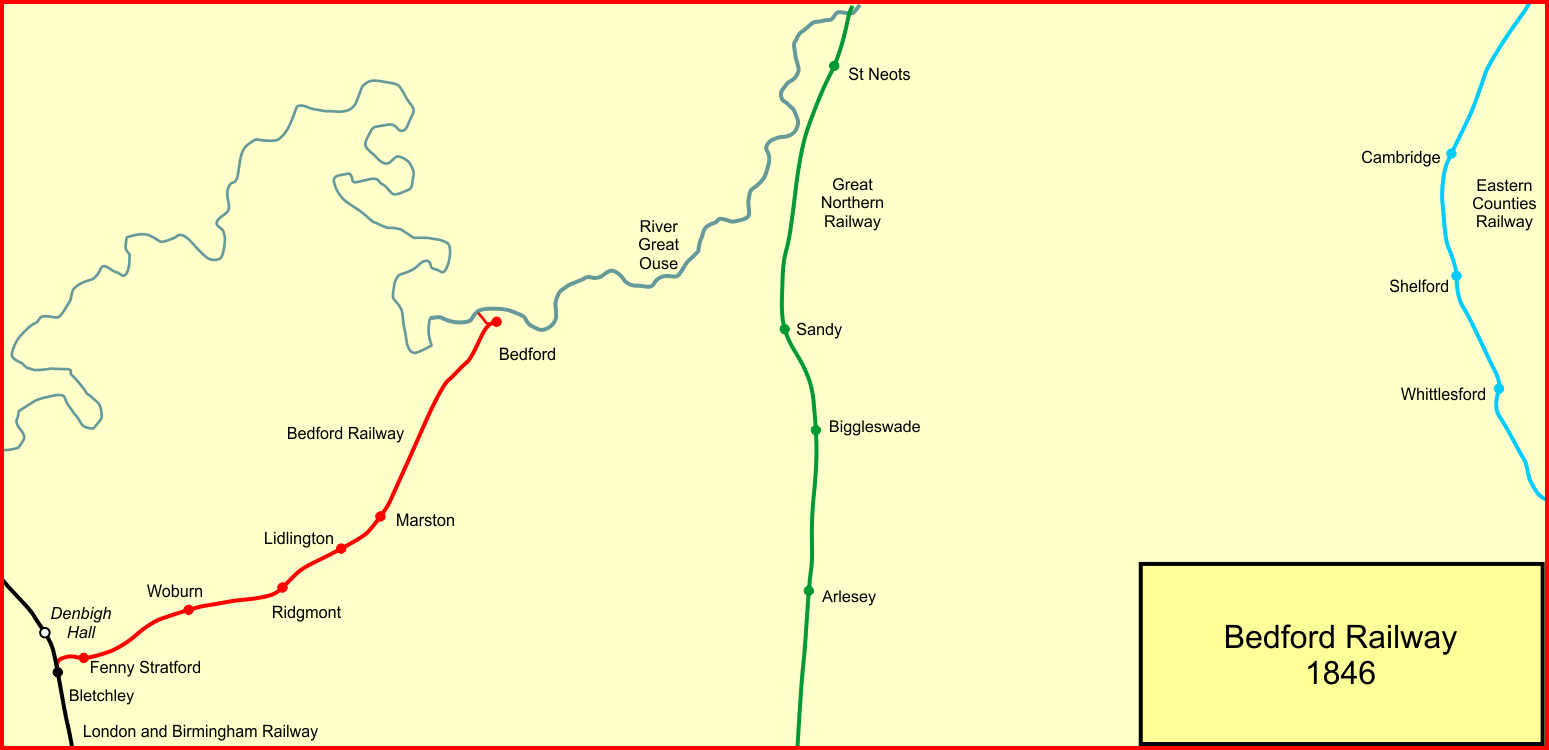|
Calvert Railway Station
Calvert was a railway station at Calvert, Buckinghamshire on the former Great Central Main Line between Manchester Piccadilly and London Marylebone. The station was opened in 1899 and closed to passengers in 1963 and goods in 1964. History Calvert was the last station on the Great Central's London Extension before it reached the Metropolitan's station at Quainton Road away. The station and line between Brackley and Quainton Junction were constructed by Walter Scott and Company of Newcastle upon Tyne. Although the station was named Calvert, no such place existed at the time and the name was that of the local landowner, Sir Harry Verney, who had been born a Calvert but changed his name upon succeeding to the Verney Baronetcy. At the time, Calvert was a very rural settlement with the few houses making up the village being situated close to the station and nearby brickworks, which was the largest employer in the area. In Great Central style, the station had a single island ... [...More Info...] [...Related Items...] OR: [Wikipedia] [Google] [Baidu] |
Calvert, Buckinghamshire
Calvert is a village in Buckinghamshire, England, near the village of Steeple Claydon. Originally named after a wealthy local family who had inherited property at Claydon House, Middle Claydon, on condition that they changed their surname to Verney, the village was founded as a hamlet in the Victorian era to house workers for the brick works that were constructed in the area. The Calvert Brickworks was opened in 1900 by Arthur Werner Itter, a brickmaker from the Peterborough area, but have since been closed in 1991 and turned into a nature reserve ( Calvert Jubilee) and landfill. All that remains of the hamlet is a small group of red brick terrace houses. At the start of the 21st century a new housing estate was built called Calvert Green, greatly enlarging the original village. In 2007 Calvert Green was detached from Charndon and formed into a new civil parish. At the 2011 Census the population of the village was still included in the civil parish of Charndon. Former clayp ... [...More Info...] [...Related Items...] OR: [Wikipedia] [Google] [Baidu] |
Grendon Underwood
Grendon Underwood is a village and civil parish in west Buckinghamshire, England, near the border with Oxfordshire. The village sits between Woodham and Edgcott, near the Roman road Akeman Street (now part of the A41), and around north-west of Aylesbury. At the 2011 Census, the population of the civil parish was 1,625. History The toponym is derived from the Old English for 'green hill near a wood', though the 'Underwood' part of the name was only added in the medieval period to differentiate the village from nearby Long Crendon and to signify the village's position close to the Bernwood Forest. The Domesday Book of 1086 records the village as ''Grennedone''. The manor of Grendon anciently belonged to the St Amand family. Almeric de St Amand of this family was one of the godfathers of King Edward I, who was baptised in 1239. In 1642, Grendon Underwood lay on the forest tracks used by gypsies and strolling players (travelling performers) and was visited more than once by ... [...More Info...] [...Related Items...] OR: [Wikipedia] [Google] [Baidu] |
Railway Stations In Great Britain Opened In 1899
Rail transport (also known as train transport) is a means of transport that transfers passengers and goods on wheeled vehicles running on rails, which are incorporated in tracks. In contrast to road transport, where the vehicles run on a prepared flat surface, rail vehicles (rolling stock) are directionally guided by the tracks on which they run. Tracks usually consist of steel rails, installed on sleepers (ties) set in ballast, on which the rolling stock, usually fitted with metal wheels, moves. Other variations are also possible, such as "slab track", in which the rails are fastened to a concrete foundation resting on a prepared subsurface. Rolling stock in a rail transport system generally encounters lower frictional resistance than rubber-tyred road vehicles, so passenger and freight cars (carriages and wagons) can be coupled into longer trains. The operation is carried out by a railway company, providing transport between train stations or freight customer facil ... [...More Info...] [...Related Items...] OR: [Wikipedia] [Google] [Baidu] |
Former Great Central Railway Stations
A former is an object, such as a template, gauge or cutting die, which is used to form something such as a boat's hull. Typically, a former gives shape to a structure that may have complex curvature. A former may become an integral part of the finished structure, as in an aircraft fuselage, or it may be removable, being using in the construction process and then discarded or re-used. Aircraft formers Formers are used in the construction of aircraft fuselage, of which a typical fuselage has a series from the nose to the empennage, typically perpendicular to the longitudinal axis of the aircraft. The primary purpose of formers is to establish the shape of the fuselage and reduce the column length of stringers to prevent instability. Formers are typically attached to longerons, which support the skin of the aircraft. The "former-and-longeron" technique (also called stations and stringers) was adopted from boat construction, and was typical of light aircraft built until the ad ... [...More Info...] [...Related Items...] OR: [Wikipedia] [Google] [Baidu] |
Calvert Infrastructure Maintenance Depot
Calvert may refer to: People * Calvert (name), about the name, including a list of people who bear it * Calvert family, an English noble family Places Australia * Calvert Range, Western Australia * Calvert River, Northern Territory Canada * Calvert, Newfoundland and Labrador * Calvert Island, Ontario * Calvert Island (British Columbia) United Kingdom * Calvert, Buckinghamshire, England ** Calvert railway station * Calverton, Nottinghamshire, England United States * Calvert, Alabama * Calvert, Kansas * Calvert, Maryland * Calvert, Texas * Calvert City, Kentucky (also formerly known as Calvert) * Calvert County, Maryland ** Calvert Cliffs Nuclear Power Plant ** Calvert Cliffs State Park * Calvert Street (other) Schools * Calvert School (other) * Calvert Hall College High School Other * Calvert expedition, 1896 exploring expedition in north-central Western Australia * Calvert Extra, an American brand of blended whiskey * Calvert Investments, an invest ... [...More Info...] [...Related Items...] OR: [Wikipedia] [Google] [Baidu] |
East West Rail
East West Rail is a major project to establish a strategic railway connecting East Anglia with Central, Southern and Western England. In particular, it plans to build (or rebuild) a line linking Oxford and Cambridge via Bicester, Milton Keynes (at Bletchley) and Bedford, largely using the trackbed of the former Varsity Line. Thus it provides a route between any or all of the Great Western, Chiltern, West Coast, Midland, East Coast, West Anglia, Great Eastern and the Cotswold main lines, avoiding London. The new line will provide a route for potential new services between and Ipswich or Norwich via , and , using existing onward lines. The government-approved the western section (from Oxford to Bedford) in November 2011, with completion of this section expected by 2025. , the company aims to complete the central section by "the mid 2020s". , electrification of the line is not planned, but the 2019 decision (to rule it out) is under review. The plan is divided into three s ... [...More Info...] [...Related Items...] OR: [Wikipedia] [Google] [Baidu] |
High Speed 2
High Speed 2 (HS2) is a planned high-speed railway line in England, the first phase of which is under construction in stages and due for completion between 2029 and 2033, depending on approval for later stages. The new line will run from its most southerly terminus, London, to its most northerly point, Manchester, with branches to Birmingham and the East Midlands. HS2 will be Britain's second purpose-built High-speed rail in the United Kingdom, high-speed line, the first being High Speed 1, which connects London to the Channel Tunnel. At its southern end, the line will terminate at London's London Euston railway station, Euston station while other termini will be Birmingham Curzon Street railway station, Birmingham Curzon Street station and Manchester Piccadilly station. In addition to these stations, the dedicated track will serve Old Oak Common railway station, Old Oak Common in west London, Birmingham Interchange, East Midlands Parkway railway station, East Midlands Parkway ... [...More Info...] [...Related Items...] OR: [Wikipedia] [Google] [Baidu] |
Akeman Street Railway Station
Akeman Street was a railway station at Woodham, Buckinghamshire, where the railway linking Ashendon Junction and Grendon Underwood Junction crossed the Akeman Street Roman road (now the A41 road). History The station was opened by the Great Central Railway, becoming part of the London and North Eastern Railway during the Grouping of 1923. That company then closed the station seven years later. The site today The buildings and platforms on top of the embankment have long been demolished, but the brick-built main station building down at road level remains and is now a private house. An overgrown single track from the former Great Central Main Line The Great Central Main Line (GCML), also known as the London Extension of the Manchester, Sheffield and Lincolnshire Railway (MS&LR), is a former railway line in the United Kingdom. The line was opened in 1899 and built by the Great Central Railw ..., the remains of the link to the GW/GC joint line, finishes in a set of stop block ... [...More Info...] [...Related Items...] OR: [Wikipedia] [Google] [Baidu] |
Finmere Railway Station
Finmere was a railway station on the former Great Central Main Line which ran between and London Marylebone. It was opened in 1899 and served the nearby village of Finmere. The station was closed in 1963 and the line through it was closed in 1966. History Construction and opening Finmere station was on the Great Central Main Line, the last English main line - built in 1899, and the first to be closed in 1966. The section of the line between and was to be constructed by Walter Scott & Co., civil engineers from Newcastle-upon-Tyne at a cost of £420,000. The construction of the section through Finmere necessitated considerable earthworks, the remains of which can still be seen today. To the north, a cutting of 180,000 cubic yards had to be excavated, while to the south the railway crossed an embankment which required the excavation of nearly 200,000 cubic yards. The earthworks were required as a consequence of the Great Central's policy to eliminate level crossings on the ... [...More Info...] [...Related Items...] OR: [Wikipedia] [Google] [Baidu] |
Varsity Line
The Varsity Line (or the Oxford to Cambridge railway line) was the main railway route that once linked the English university cities of Oxford and Cambridge, operated by the London and North Western Railway. During World War II the line was adopted as a strategic route for freight avoiding London, and additional connections were made to nearby lines to improve the utility of the route. Despite that, the route was not greatly used for its intended purpose. After the war, the line was again scheduled to be developed as a strategic route, but that scheme was never fully implemented either. Passenger services were withdrawn from most of the line on 1 January 1968, and only the Bletchley–Bedford section remained open for passenger traffic. In 1987, the section between Oxford and Bicester was reopened, followed in 2015 by a connection to the Chiltern Main Line at Bicester, enabling Chiltern Railways to operate an Oxford to London passenger service. There are funded plans for ... [...More Info...] [...Related Items...] OR: [Wikipedia] [Google] [Baidu] |




